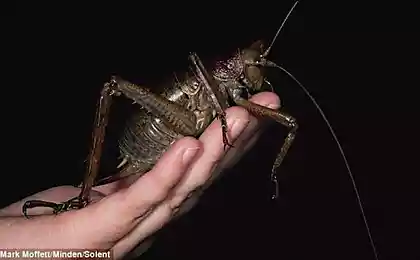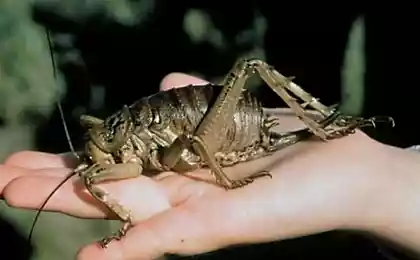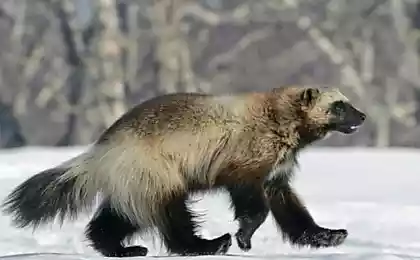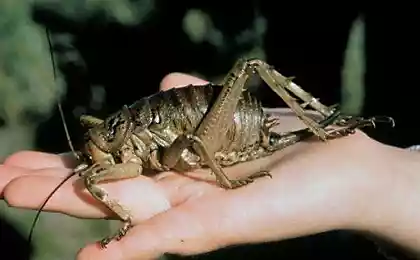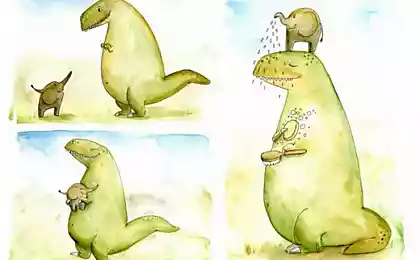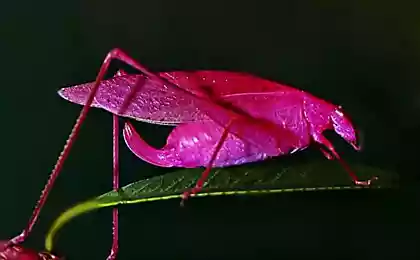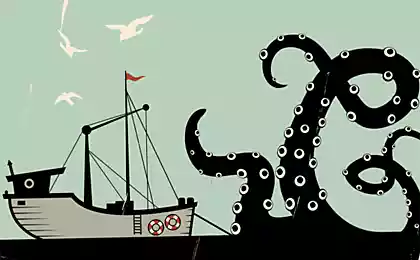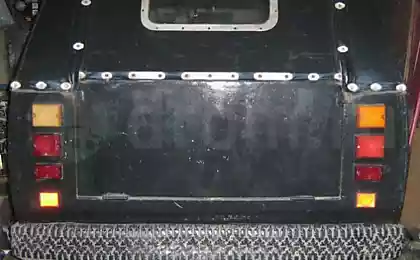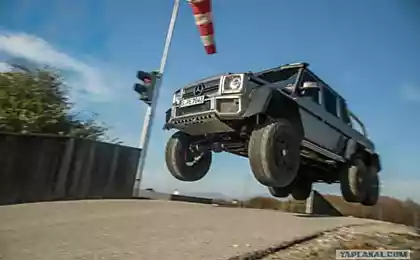2046
Giant Ueta. Monster grasshopper
Huge grasshoppers - Giant Ueta are endemic to New Zealand. In nature, there are 11 species of giant Ueta, most of which are significantly greater than those that appear in the image.

Ueta very heavy insect with a body length of 10 cm, not including their long legs and antennae, they weigh more than 71 grams, making it one of the insects in the world of heavy and heavier sparrow. Their generic name in Greek means "terrible grasshopper", found mainly in New Zealand at the offshore islands.
Almost all of them are wingless. Outwardly, they look like something big brown grasshopper, but its hind legs are enlarged and covered with large spikes. During insect protection with the force he throws them in front of him and trying to hurt the attacker.
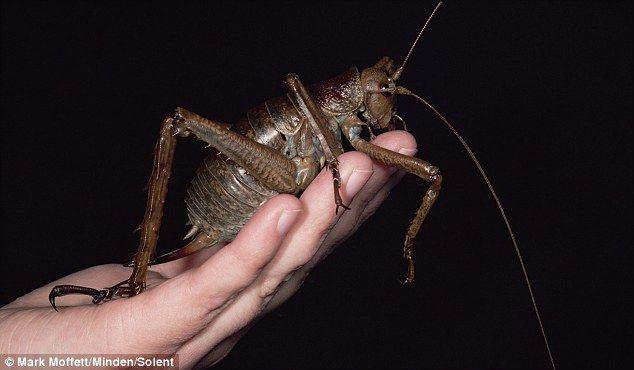

But what is the cause of gigantism among these insects? These "living fossils" (yes, they have a very ancient origin) were found in the area of New Zealand, before she became an isolated archipelago. At that time there were no small mammals - the main enemies of ueta, and they took their niche.
Ueta perfectly adapted to living in any environment, whether forest, field, cave, land and city parks. They are nocturnal. Most of these giants are predators, but a giant ueta eats lichen, leaves, flowers and fruits.
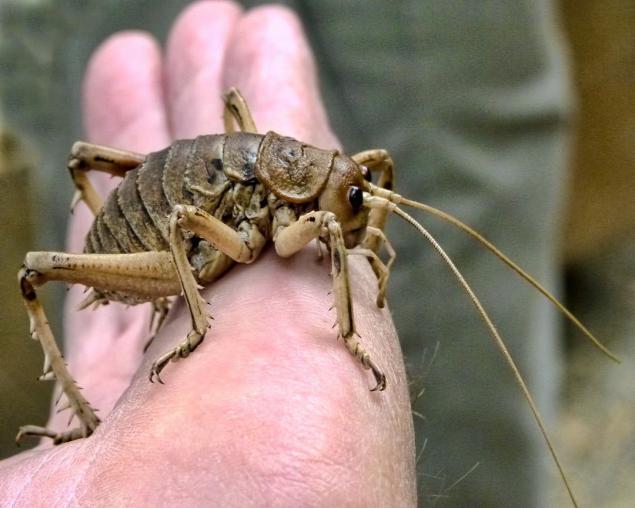
These insects bring substantial benefit to the development of the flora of New Zealand - they are actively involved in spreading the seeds of native plants, feeding on their fruits.
Sexual maturity at the giant ueta comes only one and a half years. Over time, the female lays the ground about 200-300 eggs, and then after a while die. At first glance, the number of eggs is rather big.

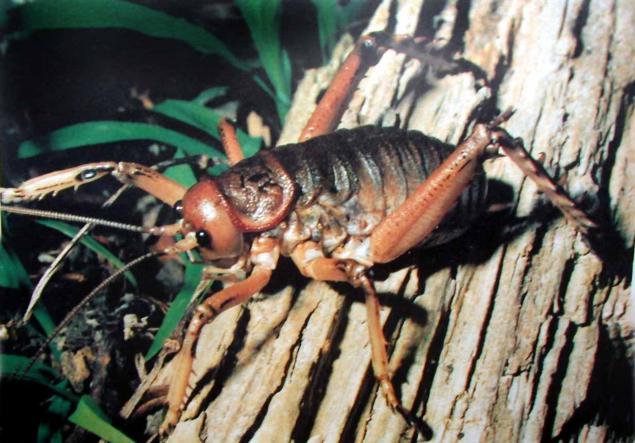
But now marked reduction in the number of these insects. The main reason for this outrage is the destruction of the giant ueta small mammals and rodents, brought to the islands by man.


Ueta very heavy insect with a body length of 10 cm, not including their long legs and antennae, they weigh more than 71 grams, making it one of the insects in the world of heavy and heavier sparrow. Their generic name in Greek means "terrible grasshopper", found mainly in New Zealand at the offshore islands.
Almost all of them are wingless. Outwardly, they look like something big brown grasshopper, but its hind legs are enlarged and covered with large spikes. During insect protection with the force he throws them in front of him and trying to hurt the attacker.


But what is the cause of gigantism among these insects? These "living fossils" (yes, they have a very ancient origin) were found in the area of New Zealand, before she became an isolated archipelago. At that time there were no small mammals - the main enemies of ueta, and they took their niche.
Ueta perfectly adapted to living in any environment, whether forest, field, cave, land and city parks. They are nocturnal. Most of these giants are predators, but a giant ueta eats lichen, leaves, flowers and fruits.

These insects bring substantial benefit to the development of the flora of New Zealand - they are actively involved in spreading the seeds of native plants, feeding on their fruits.
Sexual maturity at the giant ueta comes only one and a half years. Over time, the female lays the ground about 200-300 eggs, and then after a while die. At first glance, the number of eggs is rather big.


But now marked reduction in the number of these insects. The main reason for this outrage is the destruction of the giant ueta small mammals and rodents, brought to the islands by man.

